Installation guide¶
Prerequisites¶
Artifacts¶
logBee.Backend-{version}-win-x64.zip
logBee.Frontend-{version}-win-x64.zip
Artifacts can be downloaded from https://github.com/logBee-net/logBee-app.
Services¶
IIS Web server with ASP.NET Core Runtime 6 installed
MongoDB Community Server (version >= 6.0.x)
Installation¶
MongoDB¶
For instructions installing MongoDB server, please check the official tutorial.
IIS web applications¶
On the machine hosting the IIS server, install ASP.NET Core Runtime 6.
Create two IIS applications:
logBee.Backend
logBee.Frontend
Update the Application Pool settings for both of the applications to the following:
logBee.Frontend |
logBee.Backend |
|---|---|
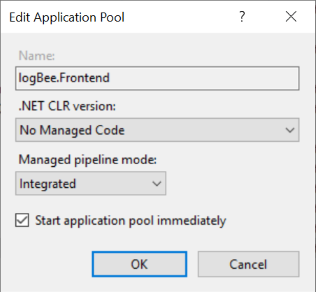
|
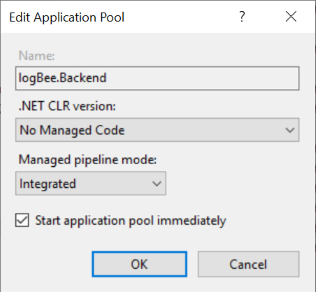
|
Copy into each IIS application folder the corresponding deploy package
logBee.Frontend |
logBee.Backend |
|---|---|
C:\inetpub\wwwroot\logBee.Frontend
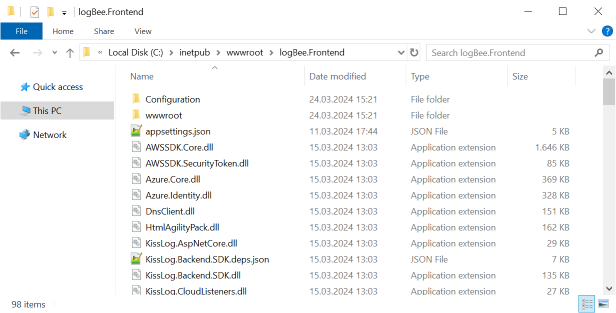
|
C:\inetpub\wwwroot\logBee.Backend
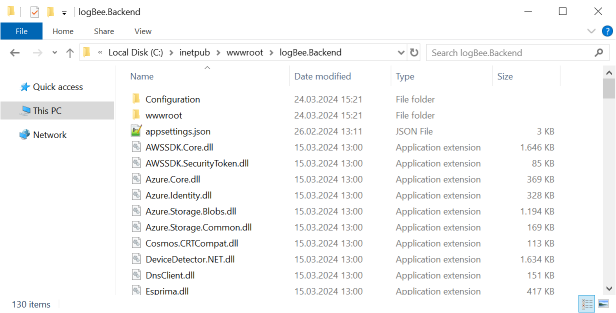
|
Note
Hotizontal scaling is not currently supported by logBee app.
Both logBee.Backend and logBee.Frontend applications must each be deployed to a single instace.
Configuration¶
On the first deployment you need to update the required configuration options, such as:
database connection
application endpoints
authorization tokens
The configuration file for each application (logBee.Frontend and logBee.Backend) is located under Configuration\logBee.json.
Initial startup¶
After the configuration files have been updated, you can run the applications.
The initial startup will bootstrap all the necessary components including the MongoDB database.
Startup logs (including errors) will be generated under the \logs folder:
C:\inetpub\wwwroot\logBee.Backend\logs
C:\inetpub\wwwroot\logBee.Frontend\logs
Startup steps¶
Make a single request to logBee.Backend root URL (http://logBee-backend.your_domain.com).
If everything went successful, you will see the logBee.Backend home page.
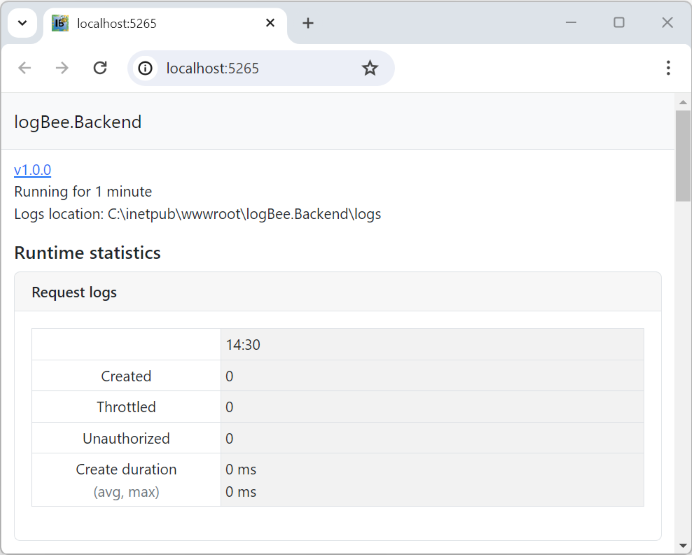
Make a single request to the logBee.Frontend root URL (http://logBee-frontend.your_domain.com).
If the startup process went successful, you will see the home page.
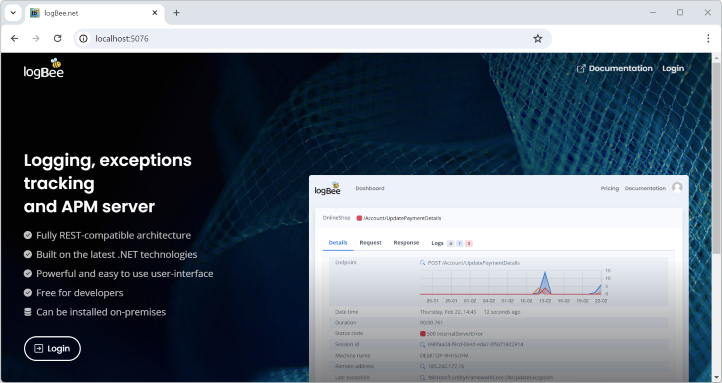
Post deployment¶
Your logBee app is running and ready to process the logs. You can update your .NET applications to start sending the logs to the newly created logBee.Backend application.
Make sure you update the configuration values, respectively the “OrganizationId”, “ApplicationId” and “ApiUrl”.
KissLogConfiguration.Listeners
.Add(new RequestLogsApiListener(new Application(Configuration["LogBee.OrganizationId"], Configuration["LogBee.ApplicationId"]))
{
ApiUrl = "http://logBee-backend.your_domain.com"
});
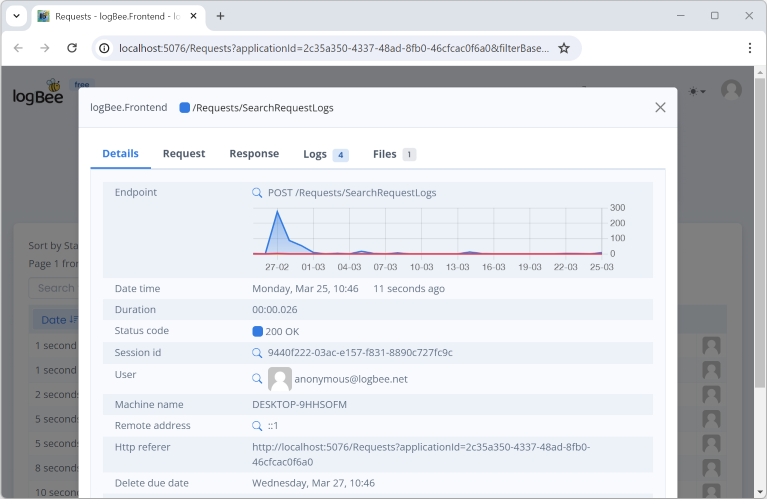
Troubleshooting¶
Startup logs (including errors) will be available under \logs folder. Here should be the first place to check.
C:\inetpub\wwwroot\logBee.Backend\logs
C:\inetpub\wwwroot\logBee.Frontend\logs
Quick checklist¶
If there are any confiuguration errors, you should see them under the \logs folder.
If using a relational database provider (MySql/SqlServer), logBee.Frontend will try to create the database (if it doesn’t exist).
Additionally, the database script will be saved under the “\logs\{Provider}-database.sql.txt” file.
- If the application fails to start and there are no log messages, enable IIS logs:Update
web.config, set<aspNetCore stdoutLogEnabled="true" />, then restart the application.C:\inetpub\wwwroot\logBee.Backend\web.config¶<?xml version="1.0" encoding="utf-8"?> <configuration> <location path="." inheritInChildApplications="false"> <system.webServer> <handlers> <add name="aspNetCore" path="*" verb="*" modules="AspNetCoreModuleV2" resourceType="Unspecified" /> </handlers> <aspNetCore processPath="dotnet" arguments=".\logBee.Backend.AspNetCore.dll" stdoutLogEnabled="true" stdoutLogFile=".\logs\stdout" hostingModel="inprocess" /> </system.webServer> </location> </configuration> <!--ProjectGuid: 4EC40754-6618-4D7D-B45E-C7FE1D6B8EF6-->Important:Create an emptylogsfolder if one does not already exist. If no logs are generated (including no IIS logs), double check that you have ASP.NET Core Runtime 6 installed.
Need help?¶
Open a GitHub issue or send an email to catalingavan@gmail.com.
For technical support, questions or any feedback, please feel free to send us a message and we will get back to you.